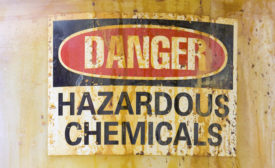Home » Keywords: » carcinogens
Items Tagged with 'carcinogens'
ARTICLES
Cancer strikes flight attendants at higher than average rates
Exposure to ionizing radiation, poor cabin air quality probable factors
June 27, 2018
New EU worker protection directive excludes diesel exhaust
Trade union blames lobbying efforts by industry
January 16, 2017
FairWarning Reports
Report renews concern about asbestos-like minerals at sites in arid west
March 7, 2016
FairWarning Reports
Dueling labels seek to anoint products free of toxic chemicals
March 1, 2016
Become a Leader in Safety Culture
Build your knowledge with ISHN, covering key safety, health and industrial hygiene news, products, and trends.
JOIN TODAYCopyright ©2024. All Rights Reserved BNP Media.
Design, CMS, Hosting & Web Development :: ePublishing









